Top 11 French Foods -Weird & Delicacies
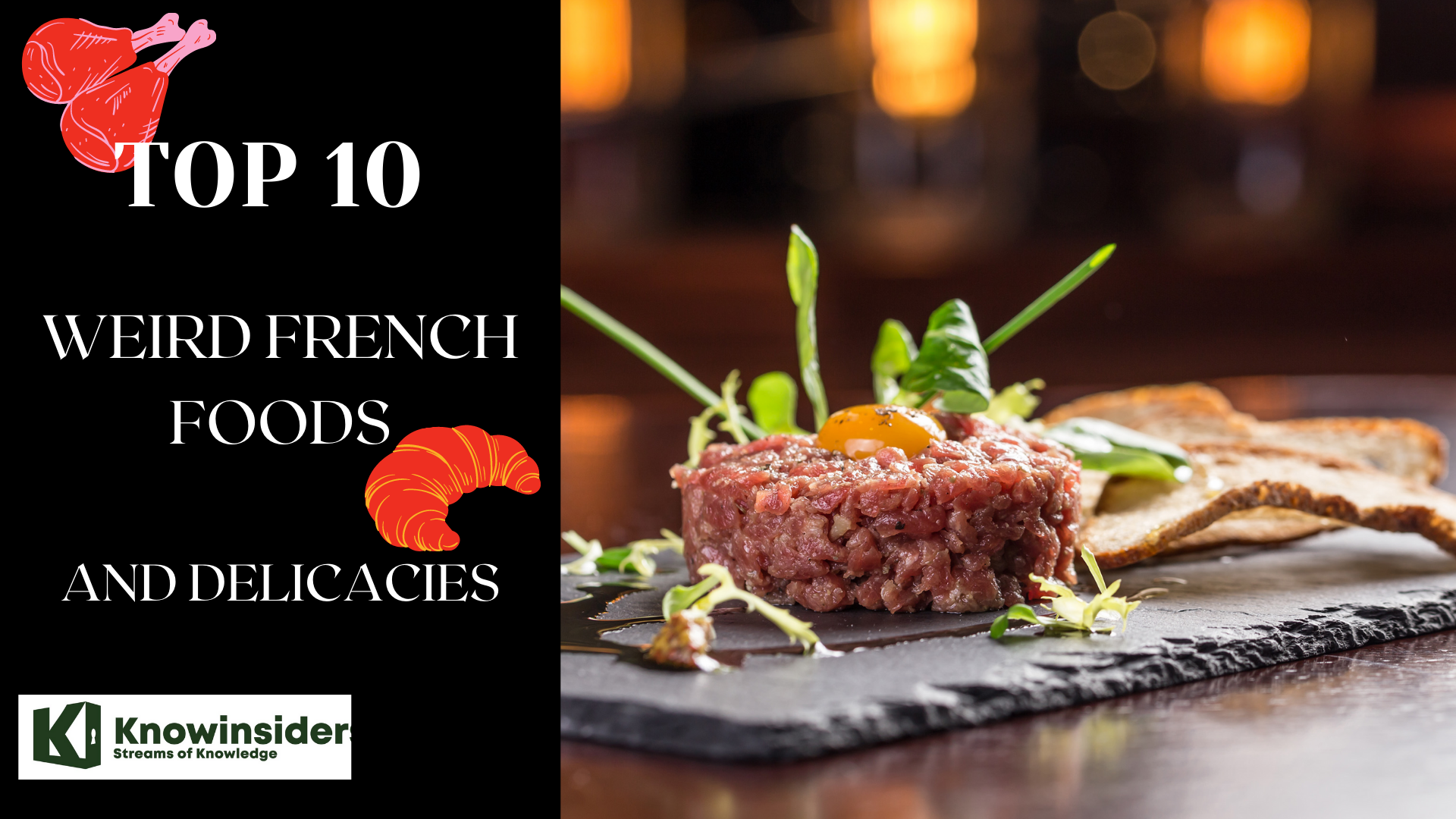 |
To know more about top 11 Weird French Foods and Delicacies, keep reading the article below!
1. Escargots de Bourgogne
 |
| Photo: Aux Fourneaux |
Burgundy snails are an iconic dish of Burgundy and French gastronomy. Mainly consumed at Christmas celebrations and family meals, they are generally prepared according to the traditional recipe. Cooked in court bouillon, the snail is then presented in its shell, which is filled with a mixture of butter, parsley and finely chopped garlic and placed in the oven.
You can taste Burgundy Snails, delicious with a glass of dry white wine with a touch of minerality (eg a Burgundy Aligoté or Chablis), in specialist establishments such as "Hélice-l’Escargotier Beaunois" or numerous restaurants in and around Beaune.
2. Pieds de porc
 |
| Photo: Time Out |
It’s said that the French eat every part of the pig aside from the ‘oink’. (Well, as you’ll soon learn, they don’t leave much except the ‘moo’, ‘bah’, and ‘quack’ either.) Trotters, as the British call them, are popular the world over but they are especially adored in France. They are cooked slowly and the final dish is tender and delightfully gelatinous (if there is such a thing). Be warned, there’s no delicate way of eating them and you’ll most likely have to take those feet in your hands and gnaw the meat straight off the bone.
3. Foie gras
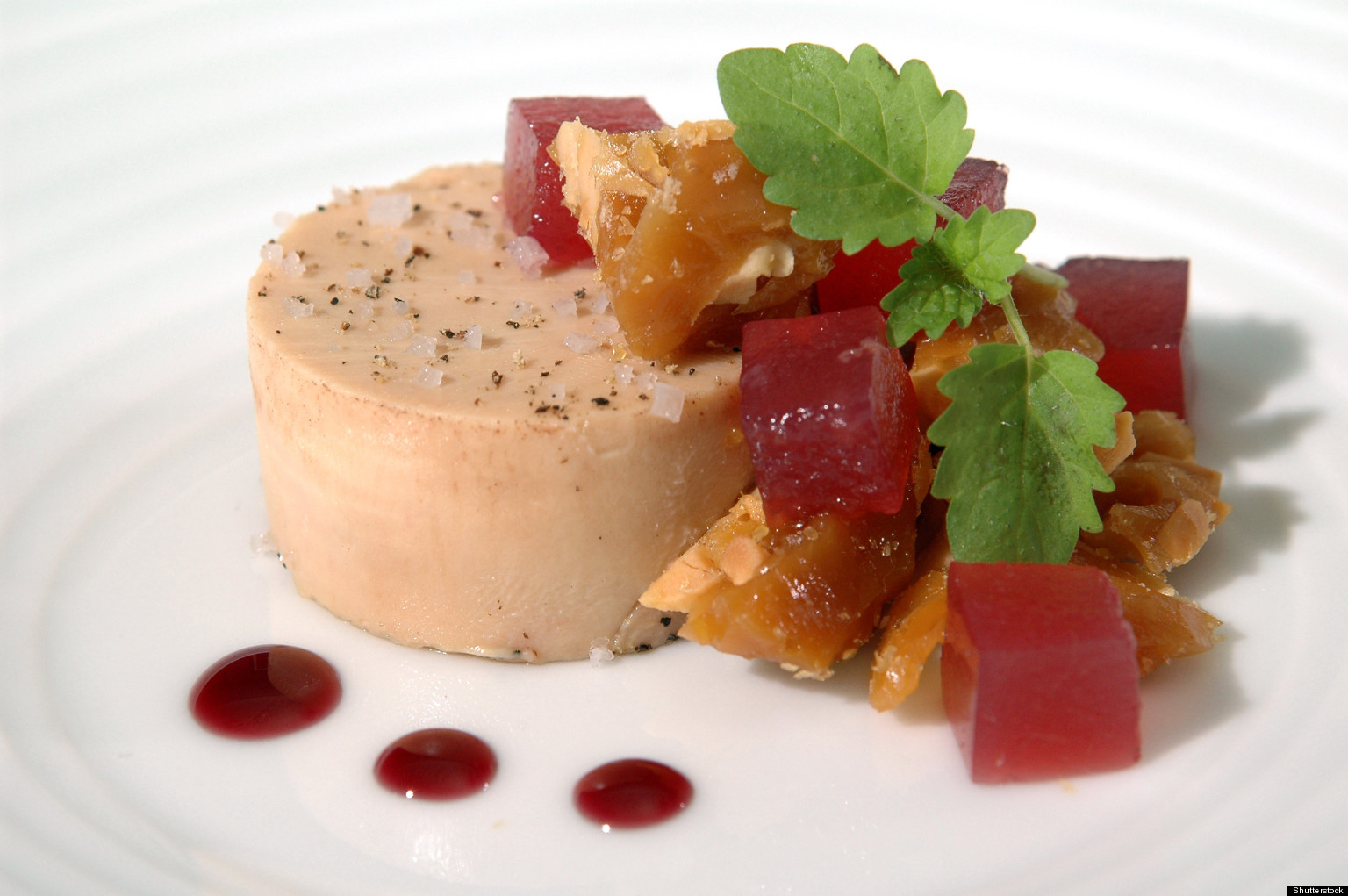 |
| Photo: Facebook |
Foie gras, (French: “fat liver”) a delicacy of French cuisine, the liver of a goose or duck that has been fattened by a process of force-feeding. What is generally regarded as the best foie gras is produced in the province of Strasbourg. Foie gras is ideally very firm and smoothly textured, with a colouring of creamy white tinged with pink.
Foie gras is often baked in a crust, as pâté de foie gras, which may be served hot or cold. The pâté, or pastry crust, is lined with jelly and the foie gras is prepared with brandy, seasonings, and truffles. Foie gras may also be served in purée form with bread or toast and jelly, with garnishes or pancakes, or in terrines.
At the beginning of the 21st century, animal rights proponents drew attention to foie gras production, arguing that force-feeding birds through long tubes stuck down their throats was inhumane and that it caused livers to become diseased. In 2006 Chicago became the first city in the United States to enact a ban against restaurants serving the dish, but the ban was repealed two years later.
4. Langue de boeuf
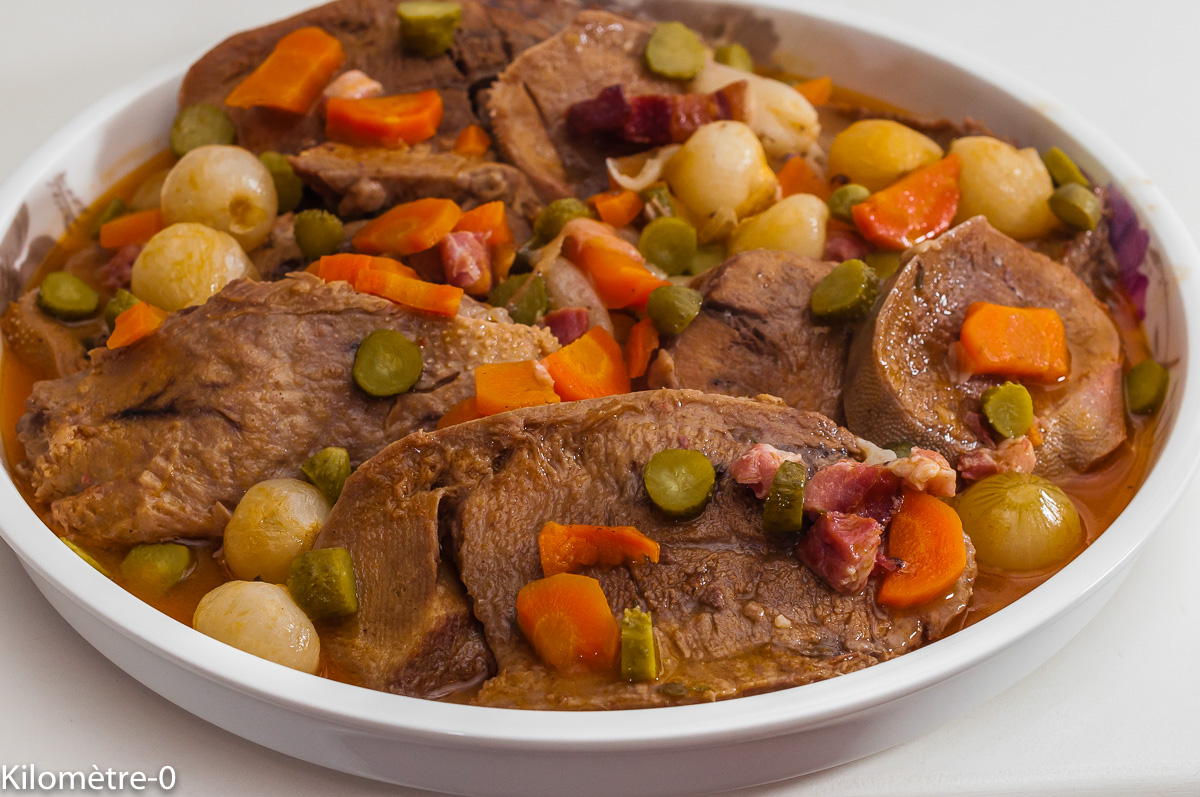 |
| Photo: Kilomètre-0 |
Tongue, you ask, who in their right mind would eat tongue? The French, that’s who. Like a lot of the foods on this list, chefs have devised techniques over the centuries to disguise the true nature (read: horror) of what they are serving their diners. For langue de boeuf, this usually means slicing the great, hulking mass of taste-budded flesh into fine, unrecognizable strips. If you can get over the psychological hurdle of knowing that what you are tasting is the same thing as what you are tasting with then, apparently, it’s a melt-in-the-mouth kind of meat.
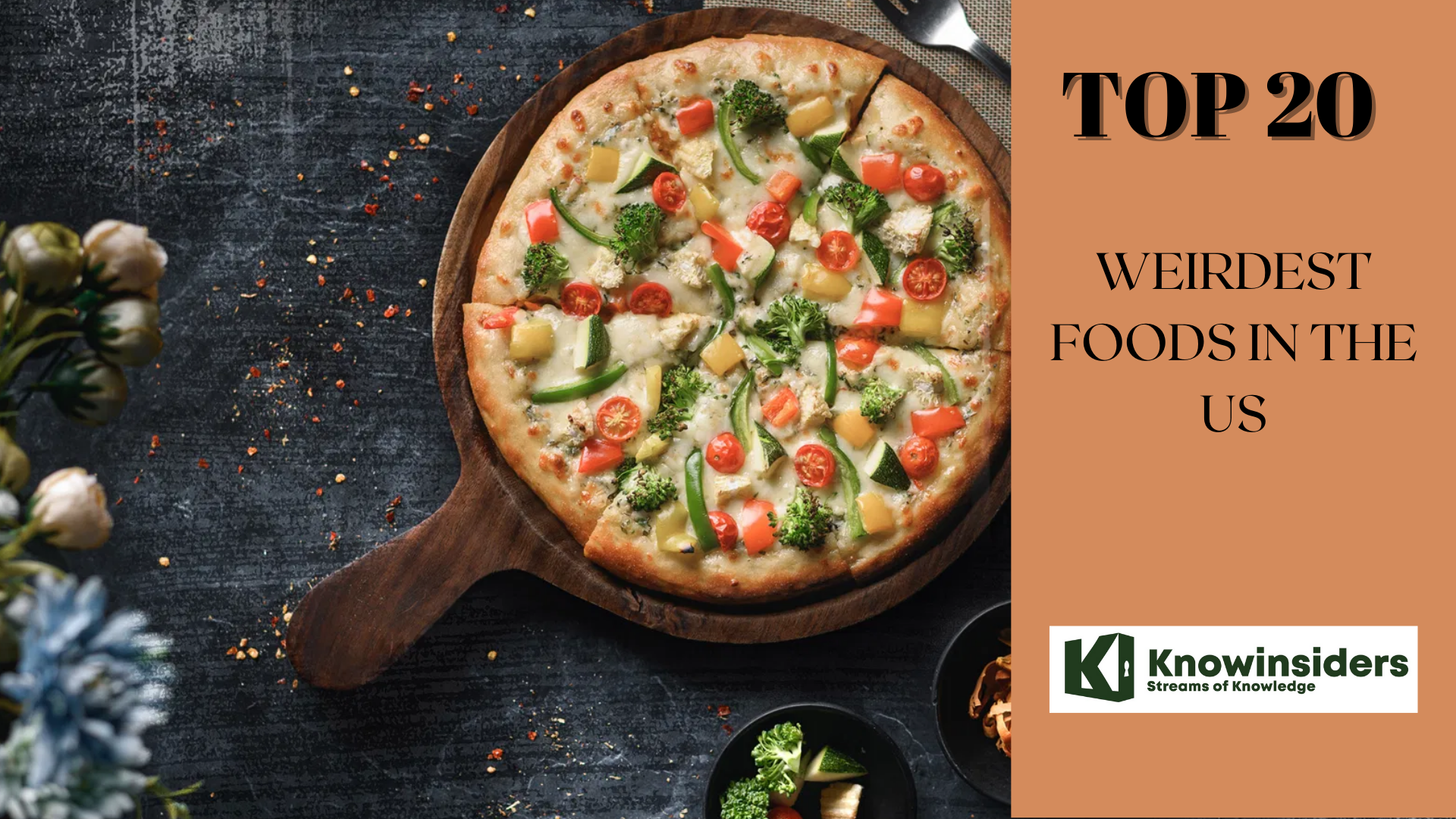 Top 20 Weirdest Foods In The US Top 20 Weirdest Foods In The US Each country has its own significant dishes that foreigners may find peculiar, even cringe-worthy, or extremely weird. The list below is top 20 weirdest foods ... |
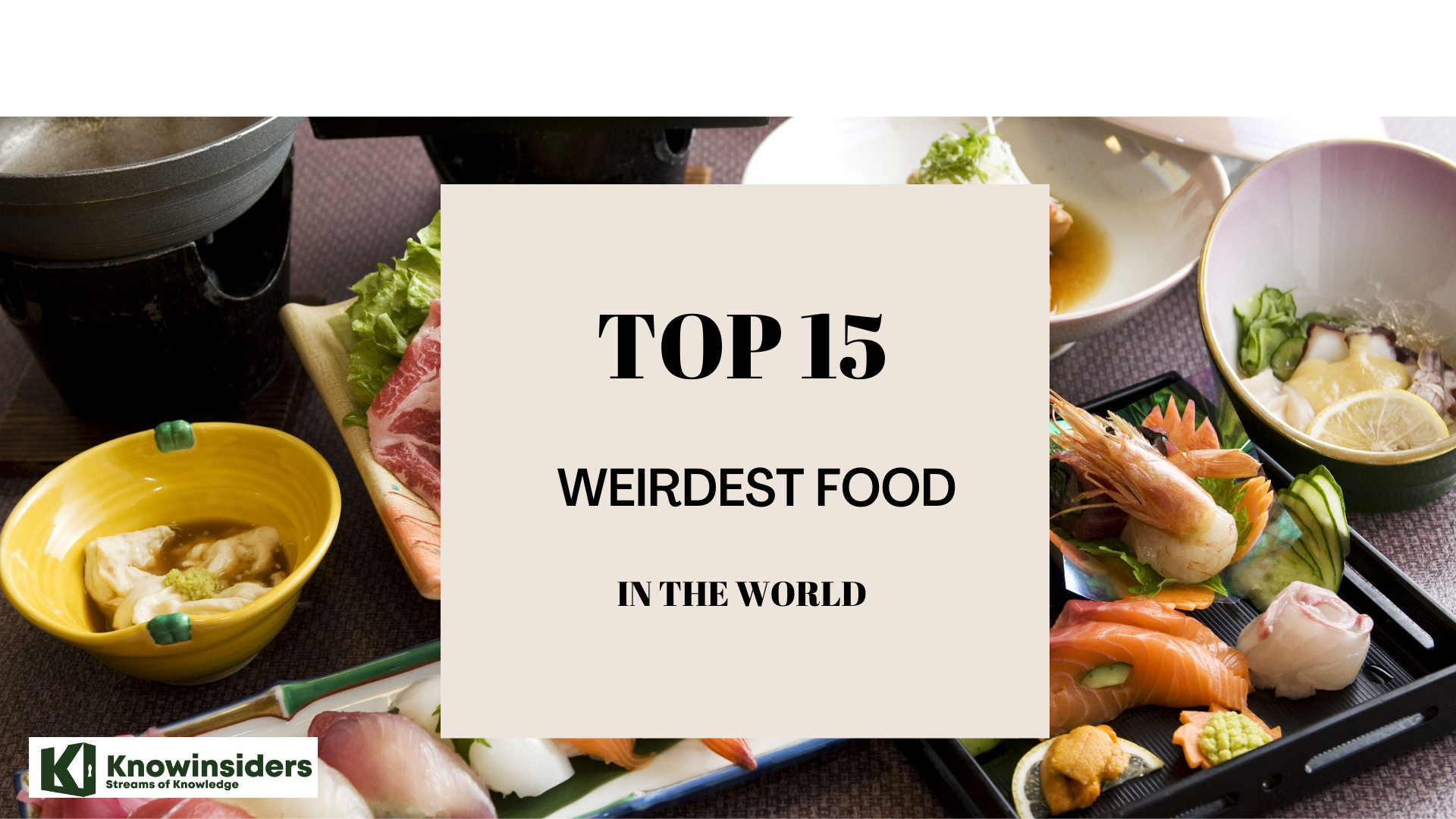 Top 15 Weirdest Foods Around The World Top 15 Weirdest Foods Around The World If you think balut egg and sushi are weird enough, then this list of the top 15 weirdest dishes around the world will make you ... |
5. Tripe
 |
| Chef cooking pork tripe in a pan | © Panther Media GmbH / Alamy Stock Photo |
Tripes à la mode de Caen is a traditional dish of thecuisine of Normandy, France.
In its original form this dish consisted of all four chambers of a beef cattle's stomach, part of the large intestine (this was outlawed in France in 1996), plus the hooves and bones, cut up and placed on a bed of carrots, onions, leeks, garlic, cloves, peppercorns, a bouquet garni, a bottle of cider and a glass of calvados in a tripière (a special earthenware pot for cooking tripe). Some sources include a large quantity of blanched beef fat. This was covered and hermetically sealed with dough and simmered in the oven for fifteen hours. The hoofs, bones and bouquet garni are removed before serving with a sprinkling of some more cider.
Although this dish is prepared in Normandy throughout the year, locals believe that the dish is best in Autumn when the apple trees are bearing. Some of the fruit falls to the ground and is eaten by the cattle, along with the rich grasses of the season, imparting a distinctive flavour to the animal.
6. Tête de veau
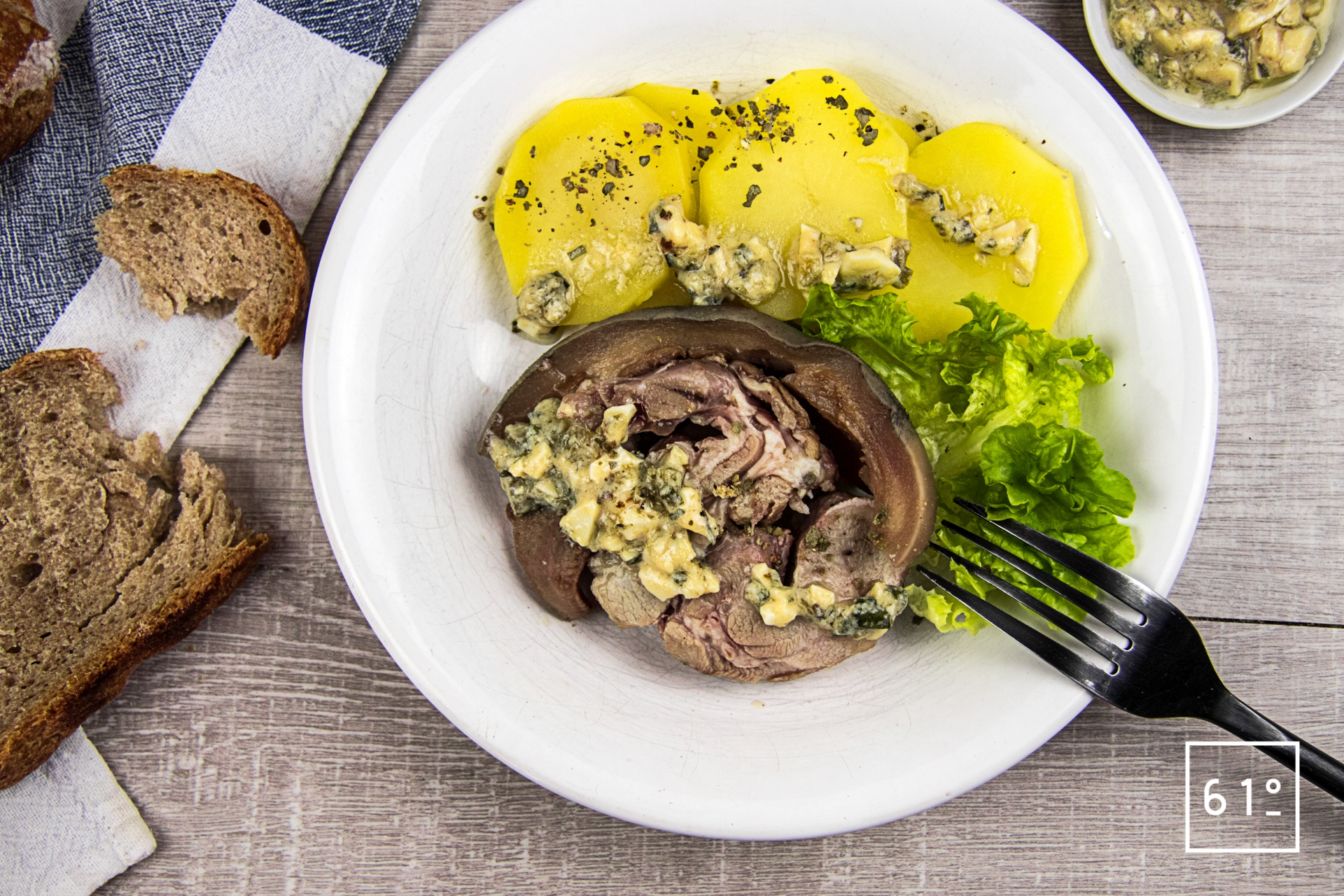 |
| Photo: 61Degres |
As the name might imply, this French dish consists of a calf’s head, which is boiled for a long time until the meat becomes tender and the skin develops a gelatinous consistency. The tongue and brain are also boiled separately with a combination of spices, and the three types of meat are served together in thick slices on a platter with the vegetables used in cooking, usually potatoes and carrots, and a drizzling of ravigote sauce.
Although the dish has numerous supposed origins, famous French writer Gustave Flaubert traces it back to the British celebrating the decapitation of King Charles I. After the French revolution and yet another well-known decapitation, the French followed suit.
This same dish used to be made using a pig’s head, however at some point (and for reasons unknown), the pig fell out of fashion and calf's head started to be used instead.
7. Ris de veau
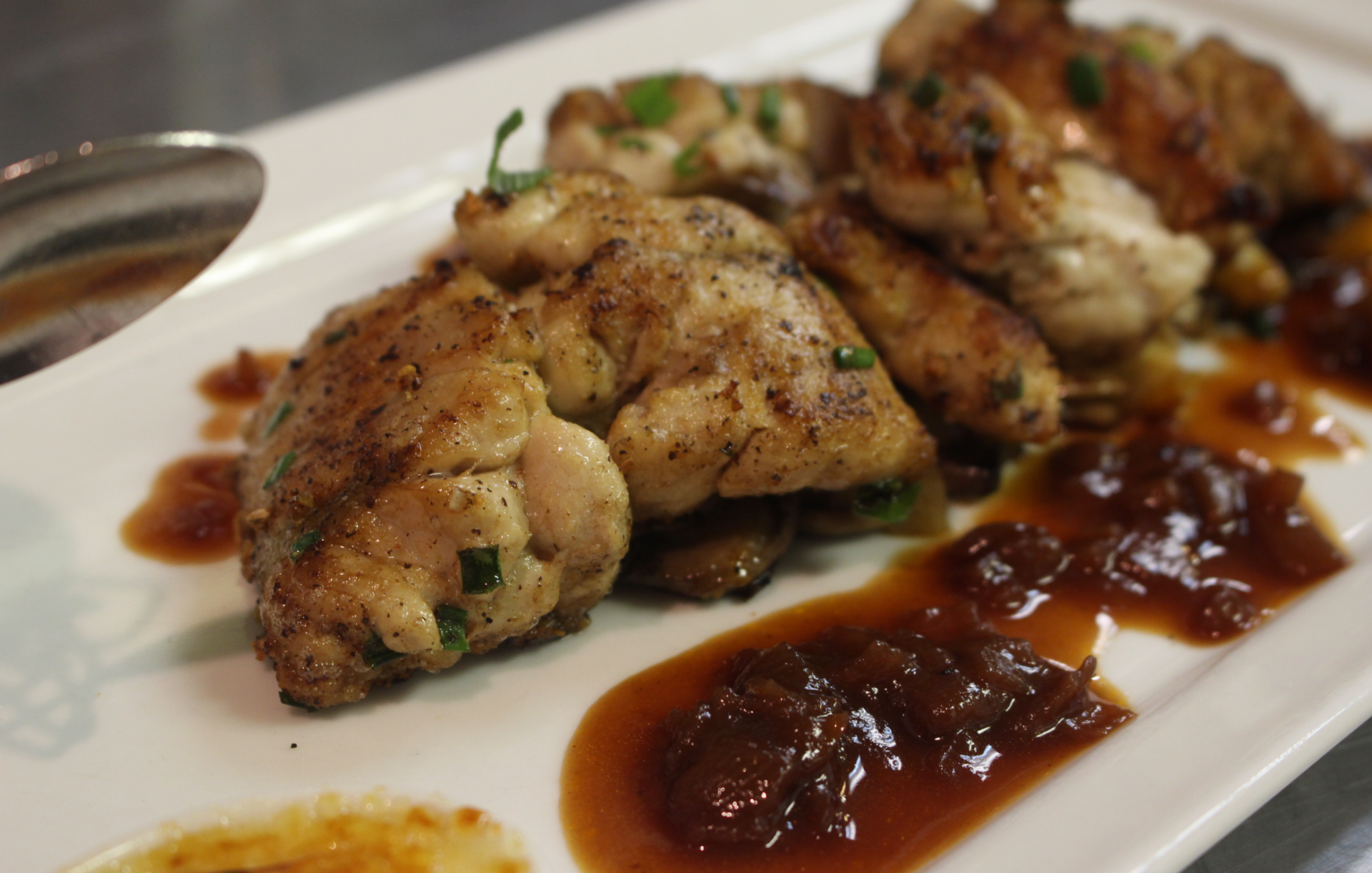 |
| Photo: Tastet |
If ingenuous methods of preparation don’t seem like they’re quite going to do the job, French chefs have been known to invent euphemisms for their more unusual dishes. Case in point: sweetbread, otherwise known as calf pancreas. The best way to prepare it is to first sear it in flour and butter and then mix it with plenty of mushrooms. A nice glass of Burgundy red will also help it slide right down.
8. Andouillette
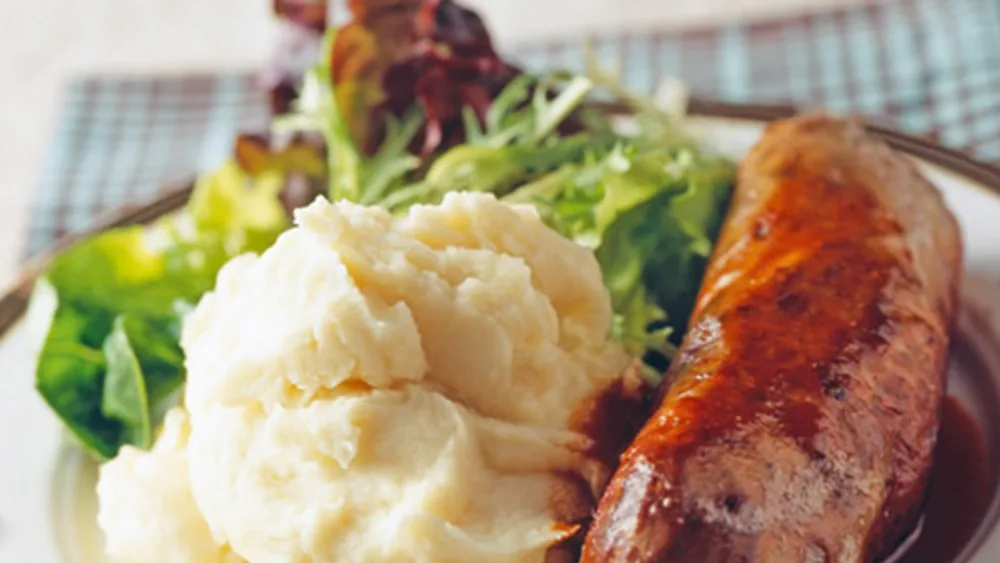 |
| Photo: Gourmet de Paris Vietnam |
Andouillette (French pronunciation: [ɑ̃dujɛt]) is a coarse-grained sausage made with pork (or occasionally veal), chitterlings (intestine), pepper, wine, onions, and seasonings. Tripe, which is the stomach lining of a cow, is sometimes an ingredient in the filler of an andouillette, but it is not the casing or the key to its manufacture. True andouillette will be an oblong tube. If made with the small intestine, it is a plump sausage generally about 25 mm (1") in diameter but often it is much larger, possibly 7–10 cm (2¾" to 4") in diameter, and stronger in scent when the colon is used. True andouillette is rarely seen outside France and has a strong, distinctive odour related to its intestinal origins and components. Although sometimes repellent to the uninitiated, this aspect of andouillette is prized by its devotees.
Andouillettes can be served either hot or cold, with the former much more common. As with all lower intestine sausages, andouillettes are to some extent an acquired taste. Their smell may offend people unaccustomed to the dish. The texture is somewhat rougher than most sausages, as the content is coarsely cut. Primarily pan-fried (sometimes breaded), it can also be boiled, barbecued or grilled. The sausage is often served with vegetables (primarily onions) in a mustard or red wine sauce.
 Traditional British Foods: Top 10 Must-try British Foods Traditional British Foods: Top 10 Must-try British Foods |
9. Couilles de mouton
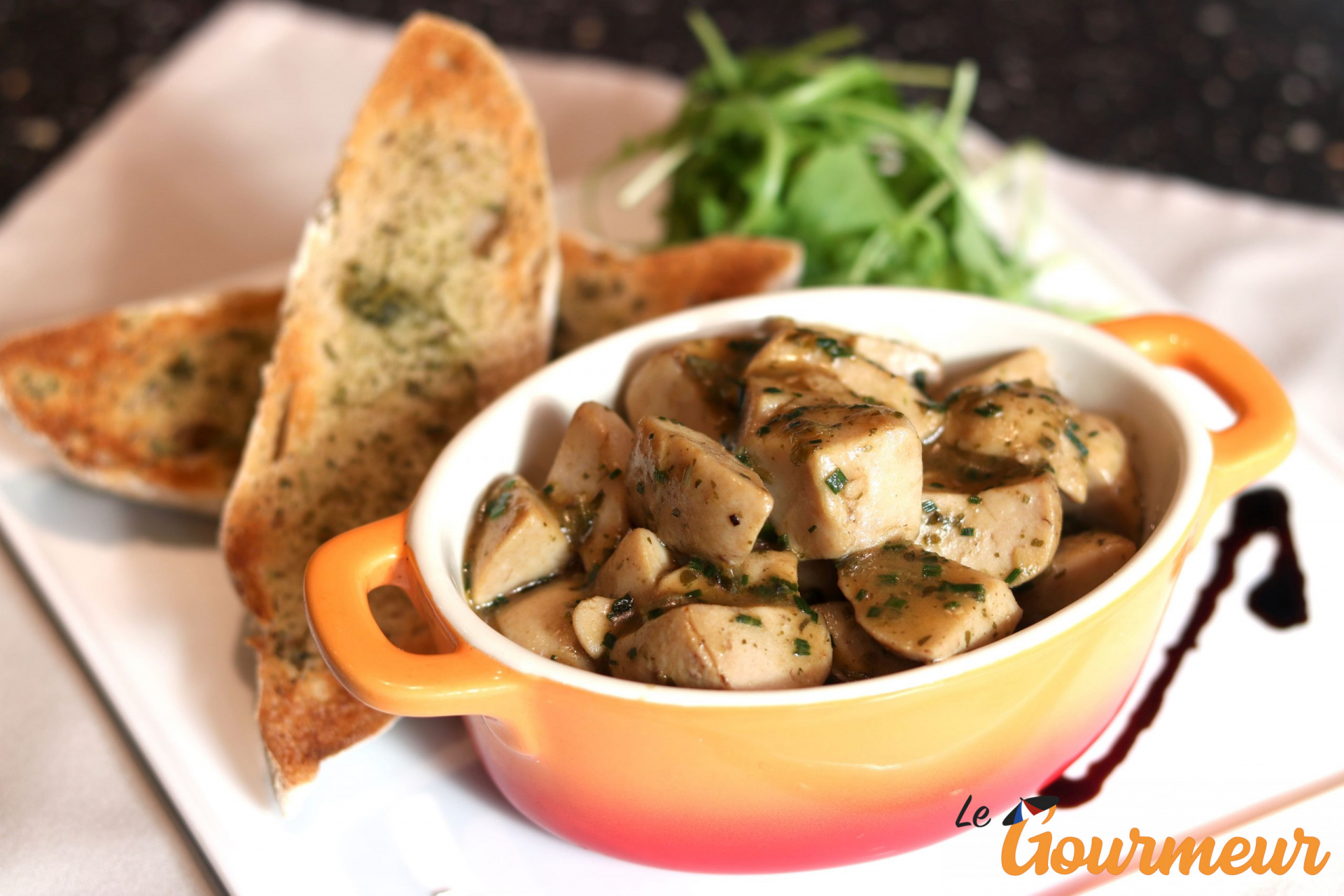 |
| Photo: Le Gourmeur |
For those readers whose French doesn’t extend to all aspects of the mammalian anatomy, enjoy these final seconds of ignorance. The couilles de mouton are, alas, the sheep’s testicles. The French region of Périgord (best known for its foie gras) has its own special recipe, called frivolites beneventines. A big bag of, well, balls, are peeled, soaked in cold water for three hours, sliced, and then grilled with lemon, parsley, and locally grown white wine. They are sweet, tender and, prepared this way, extremely pricey. They are someone’s family jewels, after all.
10. Oursins
 |
| Photo: Jadorelyon |
Just as the French are happy to eat every part of every animal that walks the land, pretty much everything that comes out of the sea is fair game. A marine delicacy that you don’t very often see on English menus are urchins. These spiny crustaceans have a reputation for being slimy but the locals will tell you they really have more of a creamy texture. Much like oysters, they bring the taste of the sea to your mouth, which is great if you’re into that.
****READ MORE: Top 7 Most Popular Foods You Must Try in Thailand
11. Farci Poitevin
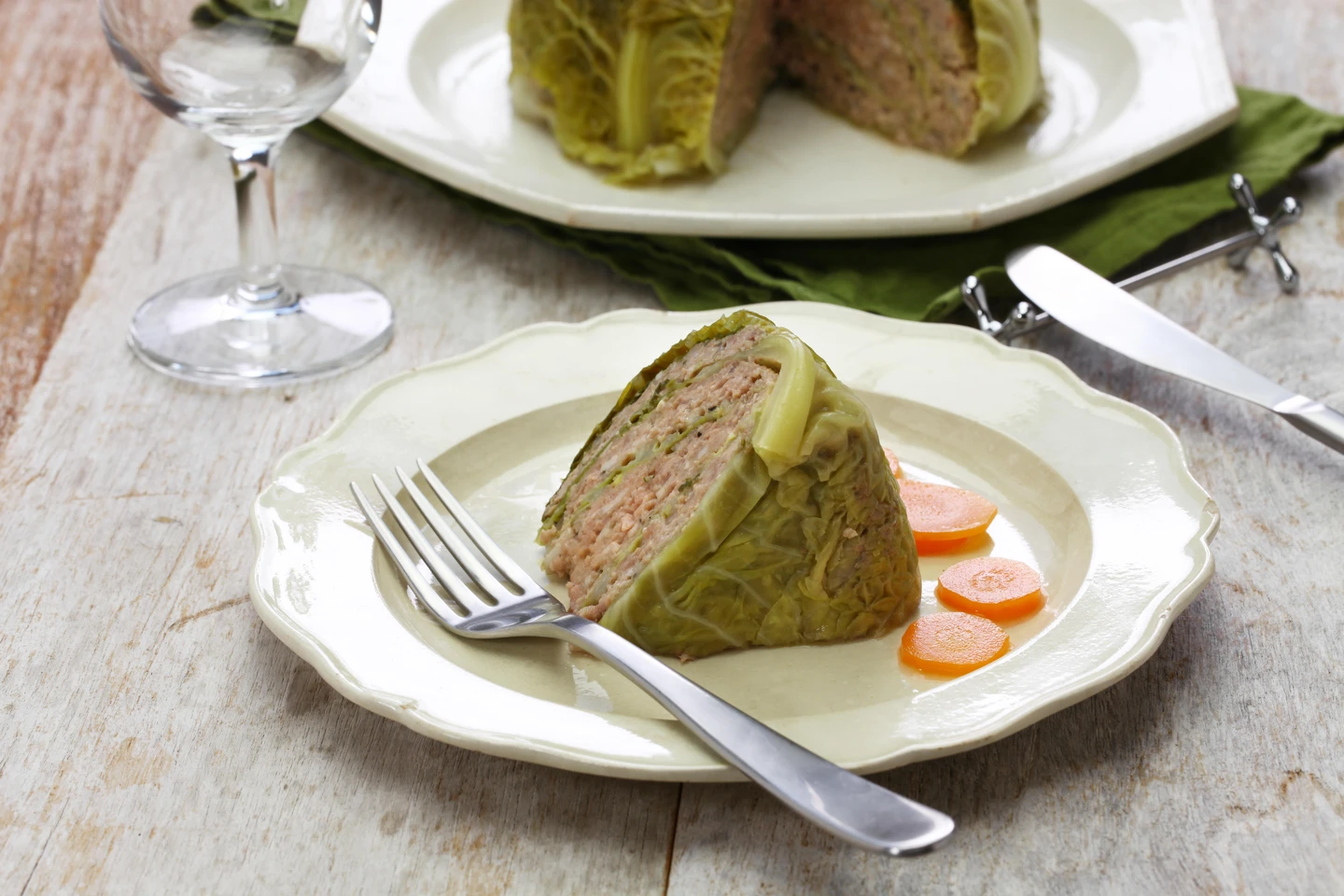 |
| Farci Poitevin | © Kyoko Uchida / Alamy Stock Photo |
Just so any vegetarians and vegans reading this don’t feel left out, the final item on our list of weird French foods can be made with or without bacon and eggs. Farci Poitevin, a rustic dish from the Poitou-Charentes region, most unfortunately, will still look as if it came out of the rear end of a farmyard animal. This fat-free terrine is a mixture of cabbage, mixed greens, beats, and spices, all wrapped up in a generous layer of gelatin. You can eat it on its own or spread on a baguette.
 Top 20 Weirdest Foods In The US Top 20 Weirdest Foods In The US Each country has its own significant dishes that foreigners may find peculiar, even cringe-worthy, or extremely weird. The list below is top 20 weirdest foods ... |
 Top 15 Weirdest Foods Around The World Top 15 Weirdest Foods Around The World If you think balut egg and sushi are weird enough, then this list of the top 15 weirdest dishes around the world will make you ... |
 Top 10 Traditional Dishes You Must Try in Brazil Top 10 Traditional Dishes You Must Try in Brazil Have a plan to travel to Brazil this summer vacation? Check out the top 10 traditional Brazilian dishes you must try below! |
 TOP 10 Best Traditional Foods in China TOP 10 Best Traditional Foods in China China is famous all over the world for not only its unique history, but also the tastes of thousands of special food. Today Knowinsiders would ... |


























